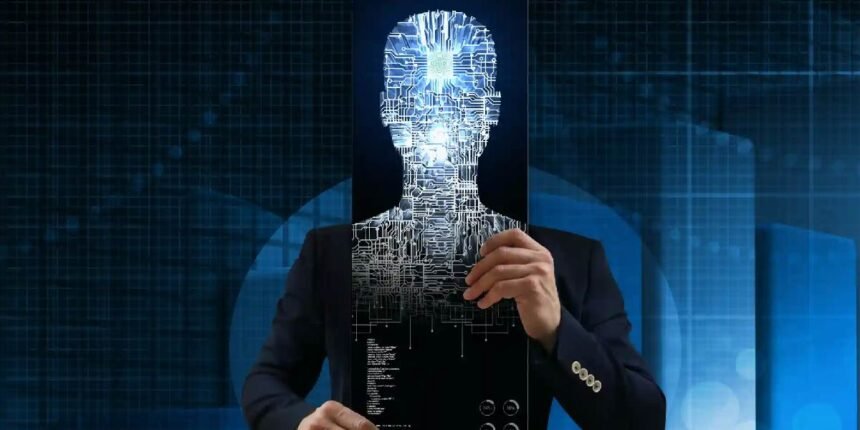What Is ECMISS?
ECMISS, short for Evolutionary Computational Modeling and Intelligent Systems Structure, is a powerful, modern framework that blends artificial intelligence, evolutionary algorithms, system modeling, and adaptive decision-making. It is used to build intelligent systems capable of learning, evolving, and optimizing performance over time. ECMISS works across various fields—from business operations to complex engineering projects—by combining structured modeling and AI to simulate real-world environments and make adaptive decisions. The ECM ISS meaning is twofold: it serves as both a business methodology that improves internal processes and decision-making and as a computational framework designed for high-level intelligent system development.
Businesses, researchers, and developers are increasingly turning to ECM ISS for its ability to handle large-scale data, improve workflow efficiency, and predict outcomes in uncertain, dynamic conditions. In this article, we explain ECM ISS in detail—from its components and history to its real-world applications and future trends—making this your complete guide to understanding and using ECMISS effectively.
ECMISS as a Business Strategy (Human-Centric Model)
In the business world, ECMISS is applied as a strategic model to improve how organizations work, make decisions, and respond to change. Companies that use ECM ISS in their operations benefit from improved process efficiency, stronger team collaboration, and more data-driven decision-making.
For example, ECM ISS allows managers to define Key Performance Indicators (KPIs) and track them through intelligent systems that adapt to performance trends. It also promotes regular internal assessments, helping businesses stay aligned with goals. Another major benefit is stakeholder engagement—employees at all levels are included in system feedback and improvement processes, creating a sense of ownership and accountability.
Companies implementing ECM ISS have reported faster product launches, shorter project timelines, and fewer operational bottlenecks. Real-life business cases include manufacturing firms reducing lead times by 30%, or healthcare providers improving service delivery through centralized data systems. Whether you’re running a startup or managing a large enterprise, ECM ISS offers a structured and intelligent way to increase agility, foster collaboration, and maximize output through technology-driven insights.
ECMISS as a Computational Framework (Technical Deep Dive)
From a technical perspective, ECMISS is a comprehensive and adaptive computational structure that integrates evolution-based algorithms, AI learning systems, and dynamic simulation models. The core components include Evolutionary Algorithms (like genetic algorithms and particle swarm optimization), which mimic natural selection to find optimal solutions. It also includes neural and cognitive modeling, simulating human brain functions and decision pathways.
ECMISS incorporates decision theory, helping systems make smart choices based on probability, risk, and expected outcomes. Most importantly, it supports adaptive learning using feedback loops and real-time data integration, allowing systems to learn from outcomes and self-improve. T
his structure makes ECM ISS ideal for environments where traditional programming fails—such as unpredictable market shifts, autonomous vehicles, or healthcare diagnostics. Unlike rigid systems, ECM ISS offers flexibility and intelligence by adjusting parameters and models as data changes. Whether used in deep learning, smart robotics, or cloud-based infrastructures, the computational ECM ISS model provides a strong, evolving system that continues to get smarter and more efficient with use.
Key Components of ECMISS (Table + Description)
Here are the essential components of ECMISS and how they function in real-world use:
| Component | Description | Use Case |
|---|---|---|
| Evolutionary Algorithms | Nature-inspired search strategies (genetic, swarm, etc.) | Drone route optimization |
| Neural Modeling | Simulates cognitive behavior using artificial neural networks | Brain function simulation |
| System Structure | Modular, layered architecture with control feedback loops | Smart grid design |
| Learning Mechanisms | Supervised, unsupervised, and reinforcement learning | Personalized education platforms |
| Decision Theory | Models decisions under uncertainty using probability and logic | Stock market predictions |
| Data Interaction Layer | Real-time integration with sensors and data streams | IoT-based climate monitoring |
| Model Calibration | Adjusts systems based on real-world results for higher accuracy | Medical diagnosis enhancement |
These ECMISS components work together to form a smart system capable of evolving and learning with each interaction.
Historical Background and Evolution of ECM ISS
The foundations of ECMISS can be traced back to the 1950s with the rise of cybernetics and systems theory, which introduced the idea of feedback loops and dynamic systems. In the 1990s, developments in neural networks and genetic algorithms brought intelligent behavior modeling into the spotlight. These early ideas merged with artificial intelligence and big data systems in the 2010s, giving rise to a more unified structure for building adaptive systems.
By the 2020s, as industries demanded smarter, more flexible tools, ECM ISS emerged as a formal term to describe this converging structure. The origin of ECM ISS lies in combining fields like AI, data science, biology, and control theory into one robust framework. With the addition of modern computing power and cloud-based architecture, ECM ISS matured into a fully scalable, multi-layered system used today in academic, industrial, and commercial sectors worldwide.
How ECMISS Works – Layer-by-Layer Breakdown
ECMISS works in a structured, layered fashion that mimics how intelligent organisms and systems process information and learn.
-
Sensing and Data Acquisition: The system starts by collecting data through sensors, APIs, logs, or manual inputs. This could be anything from user interaction logs to sensor feeds in a smart city.
-
Modeling and Simulation: Next, the system builds mathematical models to simulate behaviors and test scenarios. This layer helps predict future outcomes or test alternate paths.
-
Optimization via Evolutionary Algorithms: Then, the models are optimized using algorithms inspired by natural evolution. The system tries multiple approaches and selects the best-performing ones.
-
Machine Learning and Adaptation: The system constantly learns from real outcomes. Feedback loops enable adaptation—if something fails, it adjusts the model automatically.
-
Decision-Making Interface: Finally, the optimized system produces decisions, outputs, or recommendations that can be implemented in real life.
This layered ECMISS structure ensures that systems remain intelligent, self-correcting, and highly efficient over time.
Real-World Applications of ECM ISS
ECMISS is used in many sectors because of its adaptability and intelligence. In healthcare, ECM ISS helps predict diseases by modeling patient data, allowing doctors to provide personalized treatment. In smart cities, it optimizes traffic flow, utility distribution, and emergency responses using sensor data and real-time modeling. In the finance sector, ECM ISS simulates economic trends and investment scenarios, providing predictive insights for portfolio management.
In aerospace and robotics, drones and autonomous machines use ECM ISS to avoid obstacles, learn from the environment, and improve mission outcomes. In education, adaptive learning platforms powered by ECMISS personalize content for each student based on performance feedback. In agriculture, it monitors weather, soil data, and crop conditions to increase yields while reducing resource use. These ECM ISS use cases show how one framework can be applied across highly different industries for equally transformative results.
ECMISS vs Traditional Modeling – Feature Comparison Table
Let’s compare ECMISS with traditional modeling techniques to understand the difference:
| Feature | ECMISS | Traditional Models |
|---|---|---|
| Adaptability | Learns and evolves with time | Static, must be manually updated |
| Scalability | Scales to large systems with ease | Limited by complexity |
| Real-Time Updates | Integrates live data | Mostly batch-based updates |
| Intelligence Level | High—uses AI and feedback mechanisms | Basic rule-based logic |
| Human Intervention | Minimal once deployed | Requires ongoing manual tweaks |
Clearly, ECMISS outperforms traditional systems in dynamic, data-rich environments.
Business Implementation: Step-by-Step ECM ISS Adoption
Adopting ECMISS in your business involves a few structured steps:
-
Define Objectives – Be clear about what you want to achieve (efficiency, cost-saving, automation).
-
Engage Stakeholders – Get buy-in from all departments for smooth collaboration.
-
Educate and Train Teams – Teach your staff what ECM ISS is and how it will affect their roles.
-
Run a Pilot Program – Test ECM ISS on a small scale to validate and adjust your strategy.
-
Monitor and Iterate – Use KPIs to measure performance and make improvements.
-
Scale and Document – Apply the refined model on a larger scale and create documentation for future reference.
Following these steps ensures a successful ECMISS rollout and sustainable performance.
Case Studies of ECMISS in Action
A mid-sized manufacturer faced delivery delays. By applying ECM ISS to coordinate production schedules and team communication, they reduced lead times by 30%. A healthcare provider struggling with fragmented patient data implemented ECM ISS to centralize information flow. Result: improved patient care and a 20% rise in service satisfaction. A tech startup used ECMISS to enhance synergy between their development and marketing teams, enabling them to launch features faster and more accurately—resulting in a 40% increase in user engagement. These ECM ISS case studies show how real-world organizations have benefited from structured, intelligent system modeling and feedback integration.
Challenges of ECMISS Implementation and How to Overcome Them
Like any system, ECMISS has its challenges. Resistance to change is common, especially if staff are unfamiliar with intelligent systems. Solution: involve them early and provide proper training. Data integration issues can occur when pulling from multiple, incompatible systems—planning ahead with data engineers helps solve this. ECM ISS also requires computational resources, which can be costly for small companies. To manage this, start small and scale with ROI. Another issue is the interpretability of complex models—using explainable AI frameworks can solve this. Success lies in creating a transparent, well-communicated ECM ISS strategy from the start.
Sustaining ECMISS Results Over Time
To keep ECMISS systems performing at their best, you need ongoing maintenance. Regularly review KPIs and system logs to catch inefficiencies early. Encourage team feedback to gain fresh ideas and insights. Keep your models updated by retraining them with new data and refining system parameters. Use visual dashboards for easy monitoring. Recognize achievements and improvements—this boosts morale and encourages active participation. ECMISS is not a one-time fix but a continual improvement framework, and its real value comes from how well it’s maintained and evolved over time.
Future Trends in ECMISS
As technology evolves, ECMISS is evolving with it. Quantum computing could drastically increase model processing speed. Digital twins (real-time virtual copies of physical systems) will allow ECMISS to simulate and predict outcomes with near-perfect accuracy. Biohybrid systems, such as synthetic DNA controllers, are being explored in bioengineering using ECM ISS principles. Neurosymbolic AI, which combines logical reasoning with deep learning, will enhance ECM ISS’s decision-making. Lastly, decentralized EC MISS using blockchain will provide more secure and distributed computation. These ECMISS trends will shape the future of AI, modeling, and intelligent systems.
ECMISS in Academia and Research
ECM ISS is gaining momentum in academic circles. It’s used in cognitive neuroscience, AI development, sociological modeling, biomedical engineering, and autonomous vehicle simulation. Top universities and labs use ECM ISS for projects that require adaptive, intelligent system modeling. Journals such as IEEE Transactions on Systems, Man, and Cybernetics and Artificial Intelligence in Medicine regularly publish studies and papers related to ECM ISS, confirming its rising credibility in scientific research. As academic and industry boundaries continue to blur, ECMISS will play a central role in research-backed innovations.
Ethical Considerations in ECMISS
As powerful as ECMISS is, it raises important ethical concerns. Systems must avoid algorithmic bias that can harm users. All ECMISS decisions should be transparent and explainable. In high-risk areas like finance or healthcare, systems should include human-in-the-loop decision options. Data security is also critical—real-time systems can be vulnerable to breaches if not secured properly. Finally, regulatory compliance (such as GDPR or AI Act) must be considered. By following ethical guidelines, organizations can ensure that ECMISS remains a trustworthy, responsible technology.
Final Thoughts
ECMISS represents the future of intelligent modeling and efficient operations. It empowers organizations and researchers to simulate, learn, and optimize like never before. By merging AI, evolutionary algorithms, and decision theory, ECMISS builds adaptive systems that can handle complex, ever-changing environments. Whether you’re looking to improve business workflows, build smarter machines, or forecast complex human behavior, ECMISS is the solution. Its power lies in scalability, adaptability, and intelligence, making it one of the most important frameworks in the era of digital transformation.
FAQs About ECMISS
1. What does ECMISS stand for?
ECMISS stands for Evolutionary Computational Modeling and Intelligent Systems Structure. It is a smart system that uses AI and evolutionary methods to model, learn, and improve processes or decisions over time.
2. How does ECMISS help businesses?
ECMISS helps businesses by improving teamwork, speeding up processes, and making better data-based decisions. It can reduce errors, save time, and make the company more flexible and efficient.
3. What are the key parts of the ECM ISS system?
The main parts of ECMISS include evolutionary algorithms, neural modeling, decision-making tools, real-time data, and learning systems. These parts work together to create smart, self-improving models.
4. Where is ECM ISS used in real life?
ECMISS is used in healthcare, finance, smart cities, robotics, education, and agriculture. It helps in tasks like predicting diseases, managing traffic, improving crop yields, and more.
5. What is the difference between ECMISS and traditional systems?
Unlike traditional systems that stay the same, ECMISS learns and improves on its own using real-time data. It is smarter, faster, and better at handling complex or changing situations.
For More Information Visit Fourmagazine







